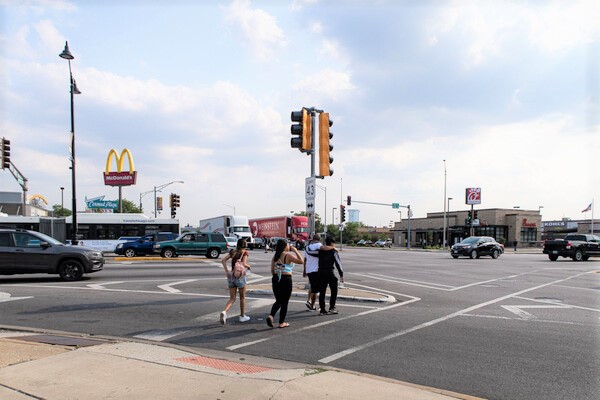Want to see motorists traveling at safer speeds? How about allowing people biking to treat stop signs as yield signs?
The clock is ticking — to have an impact, we need you to take action right away.
Please consider showing your support for a couple of important bills by filing “witness slips,” which allows you to simply go on the record in support of these bills.
You must file the witness slips before 10 a.m. on Wed., April 3, 2024.
Here are the bills under consideration and instructions on a filing witness slip.
SAFER DEFAULT SPEED LIMIT IN CITIES
HB 3530 seeks to reduce the speed limit to 20 mph (instead of 30 mph) for streets in urban areas, and reduces the default speed limit to 10 mph for alleys (instead of 20 mph).
This law would be effective immediately, but only warnings will be issued for violations in the first 60 days after enactment.
Given that excessive speed is the most common factor in serious and fatal crashes, we know that one of the best ways to save lives is to get people driving to slow down.
- In collisions at 30 mph, 6 out of 10 pedestrians will survive.
- In collisions at 20 mph, 9 out of 10 pedestrians will survive.
In Illinois, the default speed limit is 30 mph on streets and 20 mph in alleys.
Research shows that after lowering the default speed limits to below 30 mph, drivers actually slow down, with the biggest decline coming among people speeding excessively. This was true on all types of roads — arterials, collectors, and local roads.
SAFETY STOP FOR BICYCLISTS
HB 3649, the Safety Stop bill, would allow people biking to treat a stop sign as a yield sign. When encountering a red light, the person biking must make a complete stop and can only proceed when it’s safe.
While it may seem counterintuitive, this law would increase safety on streets shared by people biking and people driving. After a number of states have passed similar legislation, studies have found that crashes decreased as a result.
By not completely stopping, bicyclists don’t need to restart slowly and awkwardly, and so spend less time in intersections, the most dangerous parts of our roadways.
And, of course, this legislation does not allow people on bikes to blow through an intersection without regard for who has the right of way. If a driver arrives at a stop sign first, the person on a bike must stop and allow the driver to proceed through the intersection.
HOW TO FILE THE WITNESS SLIPS
We need you to act fast by filing witness slips for these important bills. Filing a witness slip means that you’re going on record in support of a bill.
Follow the steps below to file a witness slip on these Illinois House bills. You must file the witness slips before 10 a.m. on Wed., April 3.
- File witness slip for Safety Stop for Bicyclists Bill, HB 3649
- File witness slip for Safer Default Speed Limit in Cities, HB 3530
Here’s how to do it:
- In box I, add your name. If you are representing an organization as an employee, include the name in the “firm/business” field. If you are not representing an organization as an employee, add “self.“
- In box II, if you are representing a group, organization, or business, also add the name here. Make sure you have permission to do this! Otherwise, type “self” or “na.”
- In box III, leave the “description” field alone. Select “proponent.”
- In box IV, check “record of appearance only.”
- Agree to the terms of agreement, and then hit “create slip” in the lower right hand corner.
Because of quick responses from supporters like you, we’ve moved forward important bills like these in the past. Let’s do it again!
Thank you for taking action and helping make streets safer for people walking and biking.

